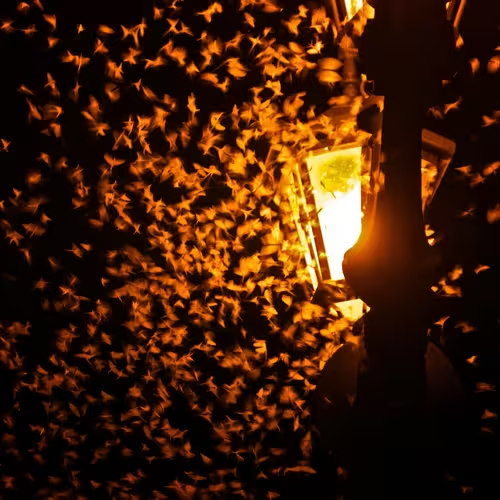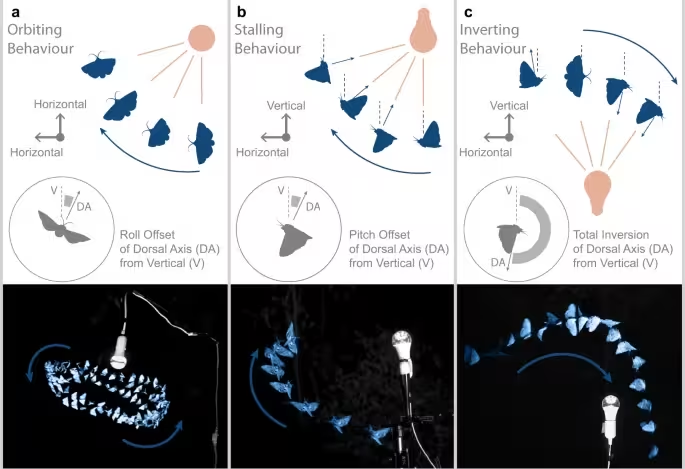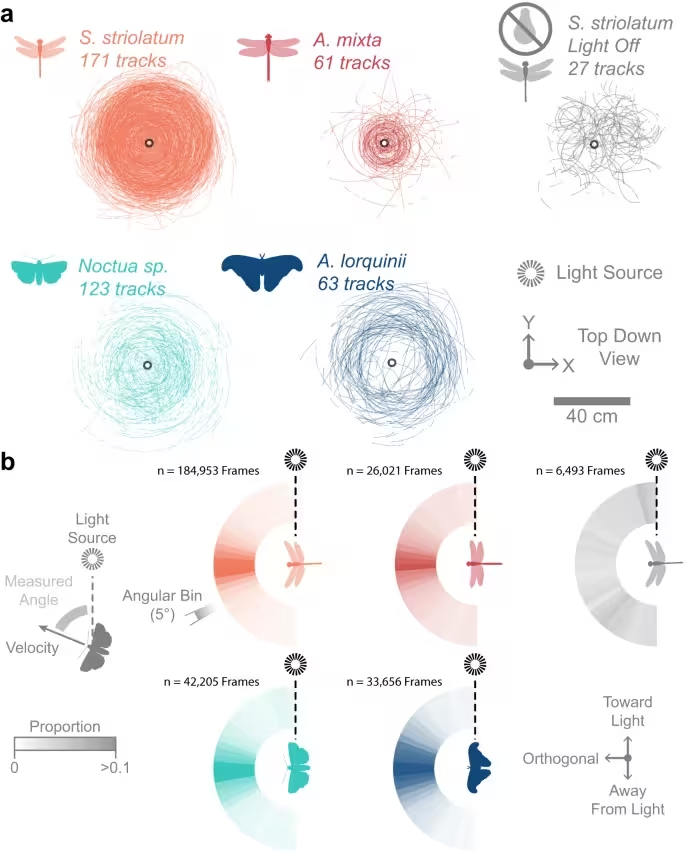Pollination is a key element in the reproduction of many plants. It involves the transport of pollen grains from the male reproductive organs called stamens to the pistils (female organs) of flowers.
This is an essential step in the life cycle of these plants. Pollen can be transported in different ways: by wind, water or animals. Entomogamy, or pollination by insects, concerns 90% of flowering plant species worldwide.
Although bees are the best-known pollinators, many other insects also perform this function. Among the thousands of other pollinators are Hymenoptera (bees, ants, wasps, etc.), Diptera (flies, mosquitoes, midges, etc.), Coleoptera (beetles, chafer beetles, etc.) and Lepidoptera (butterflies).
More explanations chez Noe and about polinizers on the Office Français de la Biodiversité website.
The following are listed:

In France, 1 500 000 000 insectes die every night around lamps.
They turn around relentlessly, and die:
You'd think that predators would be happy to have an all-you-can-eat buffet on offer, but this creates excess mortality in the insect species. So, ultimately, not profitable either.
Since end of January 2024, there is a start of explanation.
To explain why nocturnal insects fly erratically around lights and lamps, the theories of " lunar navigation " and " flight to light " have been put forward.
However, the cause of this strange behavior has yet to be elucidated.
A 3D reconstruction of insect flights around artificial lights shows that, contrary to the expected attraction, the insects do not fly directly towards the light.
Instead, the insects turn their backs towards the light, generating flights perpendicular to the source.

In natural daylight, tilting the back towards the sun helps maintain correct flight attitude and control.
However, near artificial sources, this highly conserved dorsal response to light can produce a continuous orientation around the light and trap the insect.
This is why flying insects gather around artificial lights.

Overall, reducing unnecessary, unshielded, upward-facing lights and ground reflections can mitigate the impact on flying insects at night, when sky light cannot compete with artificial sources. Future research focusing on the spectral tuning of DLR's visual components (dorsal-light-response) would isolate the best way to modify artificial lights to avoid disturbing night-flying insects.
Source : www.nature.com/articles/s41467-024-44785-3
published 30th january 2024